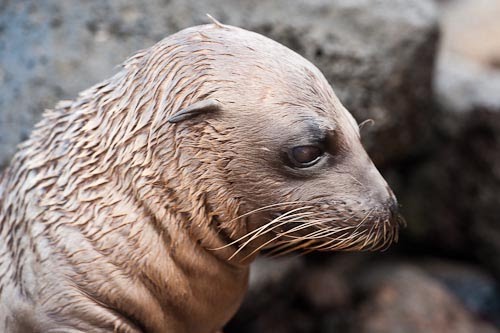North Seymour Island is home to a wide variety of wildlife.
We leave Queen of Galapagos using one of the yachts powerful tenders, to walk on Seymour Island. North of the larger Baltra, it is an uplifted island, meaning that volcanic action has pushed it above the surface of the sea.
Once ashore, right by our landing spot, we watch enchanted, a male and female Swallow Tail Gull perform a courtship ritual right in front of us. Like almost all the birds and mammals we see here in the Galapagos they seem oblivious to their human watchers.
Here, just a couple of feet away, the male has invited the female to partake in a meal by regurgitating one that he prepared earlier, feeding her from his beak. Clearly birds are not like us! She is not put off and they huddle together. We decide to give them a little privacy and move off.
Around us, so close we could touch them (but we never do), are sea lions of every size. Mothers with pups at their breast, other pups on their own squeaking loudly in the hope that mummy won’t be gone long before she brings home a nice fish supper. It may be as long as four days before she return to feed them, but a mother’s job is never done, as it is common for feeding to continue well into adulthood.
Elsewhere on the beach are Marine Iguana by the score. They climb from the sea their strong legs propelling them across terra firma. In the ocean it is their powerful tail that they use to get to the underwater rocks. In the sea their blunt snout is used to harvest algae and sea grass and they often spend up to an hour below the surface before coming up for air.
Scuttling across the rocks, brightly coloured Sally Lightfoot crabs liven up the otherwise drab black colours. These red crabs know few predators and therefore can afford to display themselves so flamboyantly. When young however, they are prey to birds, so the juveniles are black and can hardly be seen walking across the lava rocks by the shore.
Queen of Galapagos is available for charter through Robert Shepherd at Edmiston

